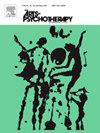An integration of physical and psychological health through the Hero’s Journey in Guided Imagery & Music: A cross-case analysis
IF 1.5
3区 心理学
Q3 PSYCHOLOGY, CLINICAL
引用次数: 0
Abstract
The Hero’s Journey narrative is prevalent in literature and the cinema and is also often utilized as a framework within which to explore and understand the circuitous nature of a client’s therapeutic process. The Hero’s Journey is conceptualized and discussed predominantly as a psychological process occurring within the mythological and imagery world of the client in psychotherapy, which is also applied to music psychotherapy approaches such as Guided Imagery and Music (Bonny Method). A cross case analysis of case studies conducted by researcher-clinicians from four different countries have revealed unexpected affordances of the Hero’s Journey for both physical and psychological domains via narrative and thematic analyses of clients’ GIM experiences. This cross-case analysis compares four GIM clients’ narratives from four different countries of origin within four applied clinical contexts: substance use disorder, a single musician, cancer care, and cardiac rehabilitation. A brief client history and summarized therapeutic case material from each case study (research or clinical) is presented in terms of methodology, emergence, and significance of the Hero’s Journey. The cross-case analysis explores and reviews these GIM case studies, where clients have undergone literal physical and psychological transformation and/or engaged with both physical and psychological aspects of their health conditions as integral components of their therapeutic and recovery processes. Further, links are made to manifestations of mental and physical health with the Hero’s Journey in the GIM process.
通过引导意象与音乐中的英雄之旅,实现身心健康的整合:跨案例分析
英雄之旅叙事在文学和电影中很流行,也经常被用作探索和理解客户治疗过程迂回本质的框架。英雄的旅程被概念化并主要作为心理治疗中客户的神话和意象世界中发生的心理过程进行讨论,这也适用于音乐心理治疗方法,如引导意象和音乐(邦尼方法)。来自四个不同国家的研究人员和临床医生对案例研究进行了交叉案例分析,通过对客户GIM体验的叙述和专题分析,揭示了英雄之旅在生理和心理领域的意想不到的启示。本交叉案例分析比较了四名GIM客户在四种应用临床背景下来自四个不同原籍国的叙述:物质使用障碍,单一音乐家,癌症护理和心脏康复。从方法论、出现和英雄之旅的意义方面介绍了一个简短的客户历史和每个案例研究(研究或临床)的总结治疗病例材料。交叉案例分析探讨和回顾了这些GIM案例研究,其中客户经历了字面上的身体和心理转变,并且/或者将其健康状况的身体和心理方面作为其治疗和恢复过程的组成部分。此外,还将精神和身体健康的表现与全球综合管理进程中的英雄之旅联系起来。
本文章由计算机程序翻译,如有差异,请以英文原文为准。
求助全文
约1分钟内获得全文
求助全文
来源期刊

Arts in Psychotherapy
Multiple-
CiteScore
3.20
自引率
11.10%
发文量
66
期刊介绍:
The Arts in Psychotherapy is a dynamic, contemporary journal publishing evidence-based research, expert opinion, theoretical positions, and case material on a wide range of topics intersecting the fields of mental health and creative arts therapies. It is an international peer-reviewed journal publishing 5 issues annually. Papers are welcomed from researchers and practitioners in the fields of art, dance/movement, drama, music, and poetry psychotherapy, as well as expressive and creative arts therapy, neuroscience, psychiatry, education, allied health, and psychology that aim to engage high level theoretical concepts with the rigor of professional practice. The journal welcomes contributions that present new and emergent knowledge about the role of the arts in healthcare, and engage a critical discourse relevant to an international readership that can inform the development of new services and the refinement of existing policies and practices. There is no restriction on research methods and review papers are welcome. From time to time the journal publishes special issues on topics warranting a distinctive focus relevant to the stated goals and scope of the publication.
 求助内容:
求助内容: 应助结果提醒方式:
应助结果提醒方式:


